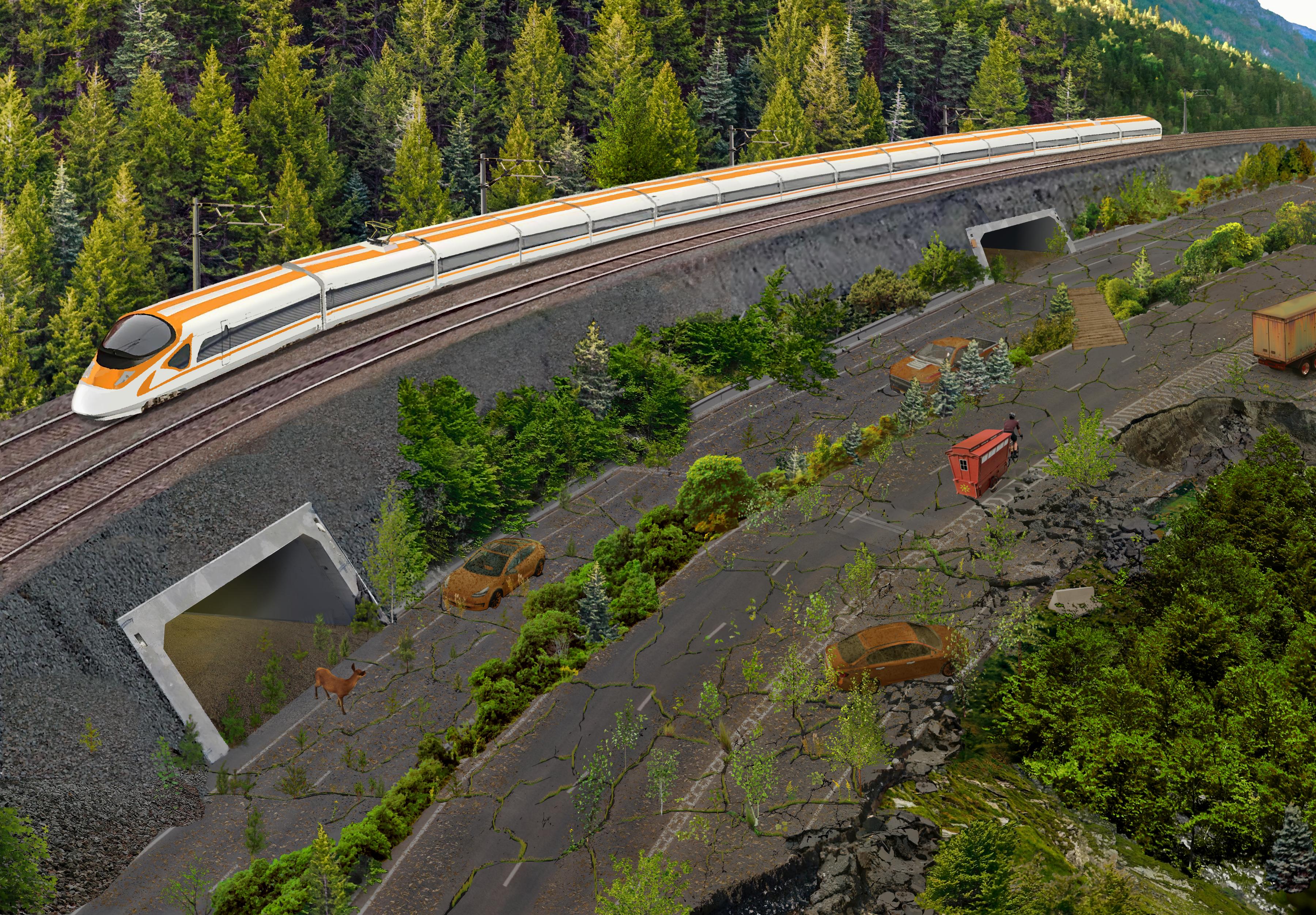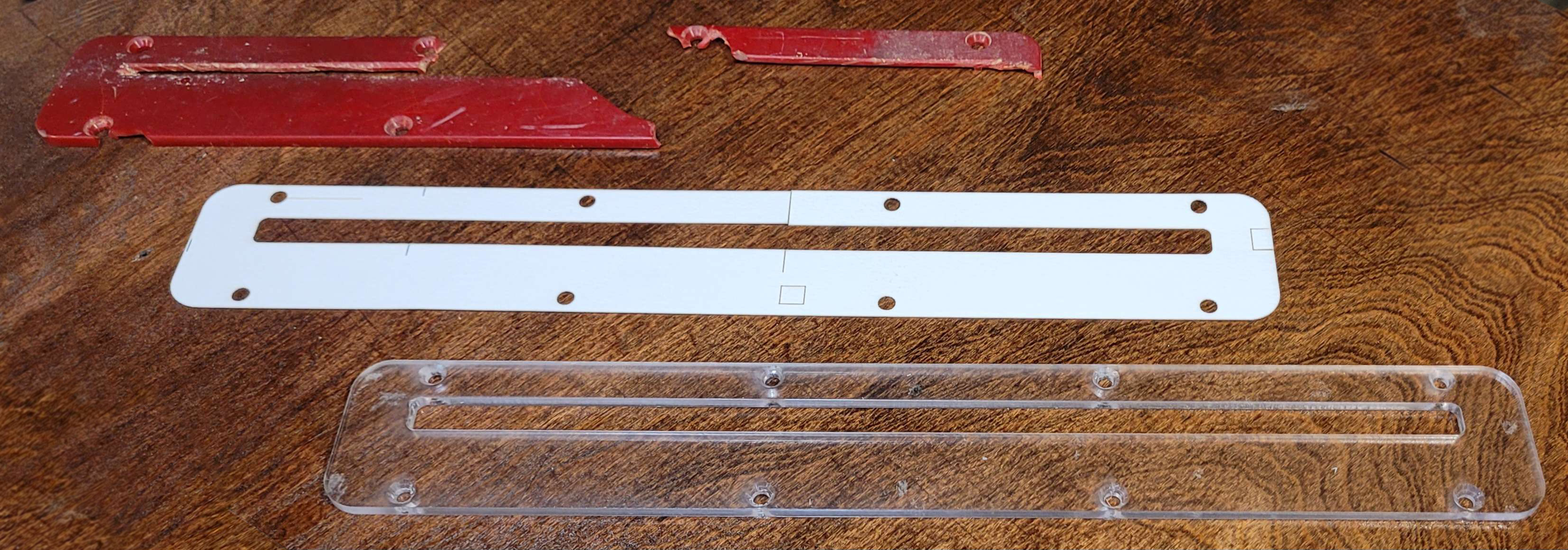That’s a good idea! I do that with peanut butter at a fancy grocery store - I wonder if there’s one around that does juice
I write science fiction, draw, paint, photobash, do woodworking, and dabble in 2d videogames design. Big fan of reducing waste, and of building community
https://jacobcoffinwrites.wordpress.com
@jacobcoffin@writing.exchange
- 35 Posts
- 217 Comments
I hadn’t realized how lucky we were - we have one of those crunchy refill stores in town, where you can bring your own containers and buy various powders and liquids (primarily cleaning supplies though they do some seasonings as well. I wish I could buy orange juice that way (I basically gave up on drinking it because I didn’t need any more plastic bottles). We switched to various dilutions of castile soap for most things, and a generic dishwasher powder for our little countertop rig.

 2·8 days ago
2·8 days agoThere are some interesting projects turning them into pedestrian bridges and roofs for bike racks.

 1·11 days ago
1·11 days agoSeconding this - if I ever move back home I’ll be looking for some kind of little electric kei truck for hauling trash and supplies. Most of my driving when I lived there was under 50mph and over fairly short distances.

 3·26 days ago
3·26 days agoThanks!
I do have thoughts on that! This might be a little jumbled as it’s mostly off the cuff, but I think how much a society can be run only on renewable materials will depend on how much they’re willing to change their whole default framework, and what they’re prepared to give up in the short and long term to do it. Degrowth and library economy concepts would certainly apply. (I really like library economy stuff because I really like reuse).
I think there’s an abundance of resources, from existing usable items to raw materials which have already been extracted already accessable to us out in the world.
Right now there’s this default pipeline from extracted raw material to new (ideally fragile/flimsy/disposable) products to landfill. A library economy on steroids might include both tons of long-term reuse of whatever’s already been made, but also recycling of available materials that have already been extracted. There’ll always have to be new manufacture but ideally it’d be much reduced and anything made new would be designed to last and to be fixable. But that takes a ton of commitment on a societal level to using less and to sorting and distributing everything that already exists. It means mining junkyards and landfills for already-extracted raw materials and generally changing how we do things.
When it comes to energy, I think there’s a sort of hurdle we have to get over - first we need to get most of our energy to renewable, then we can optimize for long term repairability. There’s a lot of interesting recycling processes ramping up for solar panels, and as I understand it, there are less-efficient designs that are more fixable. So for the short term, I suspect whatever designs get the job done we use, and after that, we can start adjusting for long term.
My art tends to be of a society that’s as obsessed with reuse and externalities as ours is with money. They’re a society of scavengers and fixers and makers. That handwaved cultural change is sort of what I’ve chosen for my spec fix suspension of disbelief. Most of the tech I include already exists, but examining what a society that makes all its decisions around reducing harm would do with them is what I really enjoy.

 6·26 days ago
6·26 days agoThey’ve been doing a bunch of cool solarpunk art for a bit, and they’ve started releasing it CC-BY (I think) including on wikimedia commons, which is great because otherwise the solarpunk category over there was mostly a bunch of AI art and proposed flags. (I’d added some of my photobashes so it wasn’t just AI representing the genre, but I’m very glad to have them contributing art with a lot of intent behind it.) I think a lot of the planning for their scenes comes from the solarpunk prompts podcast these days.

 3·1 month ago
3·1 month agoThanks so much, that’s great to hear! And thanks for all your input! Sorry the text is small, I work on a knockoff wacom-style tablet so I get used to looking at it zoomed in and from pretty close to the screen.
Feel free to post it anywhere, I’m always delighted to find out when these images travel around a bit on their own.

 4·1 month ago
4·1 month agoThanks so much! This was a fun one, I always loved these kind of diagrams/wimmelbilder type pictures and had a lot of fun trying to make one.

 1·1 month ago
1·1 month agoThanks, I appreciate you taking the time to answer my questions!

 1·1 month ago
1·1 month agoThanks!! That’s really good to know about Bald Cypress! That was my first guess for selecting trees. I ended up picking them and black willows, just based on range and look but I’ll take your advice and leave the willows generic. I think these chinampas are kind of overgrown at the moment, but I figure the trees don’t cover the entire thing, just the corners. I was able to find some roots to reference (mostly from washouts or other exposed roots) and tried to get the details right for cypress and willow (but I’m not an arborist and had trouble finding info on depth). Let me know what you think!


 1·1 month ago
1·1 month agochinampas
Hi, I’ve been reading up on chinampas to try to get the details right and I was hoping to borrow some of your tree knowledge. Most sources mention a willow (Ahuejote (Salix bonplandiana)) and a cypress (Taxodium mucronatum) as the trees they used to reinforce/replace the underwater fences for soil retention. I’m sort of doing this picture as if its in New Orleans (for some of the buildings and other details anyways) and I think that’s outside these specific trees current ranges. I was wondering: can I swap in any other cypress or willow since there are some native to Louisiana or would some cause problems?
Here’s what I’ve got so far:

I’m probably not showing enough alternating layers of plant matter and mud, but I’m hoping it gets the point across. I’ve tried to find good sources, so far these diagrams are my favorites:



Some seem to show floating islands or like, a floating top layer with water underneath, inside the reed wall, which seems weird and inaccurate from what I’ve read. At this point, I mostly just want to get all the trees added, make sure they’re realistic, and find some accurate roots to include to show how they reinforce the earthworks. From what I’ve read it sounds like willow and cypress just kind of put roots everywhere (I’m used to being able to find clearer diagrams for trees like pines and oaks, but have struggled to find good drawings for these. Also might add cypress knees in the waterways where they’re really well established, we’ll see. Then I’ll start cleaning up the image and getting everything to match aesthetically.

 3·2 months ago
3·2 months agoHugely in favor of helping solarpunk concepts reach people across language barriers! And very interested to see solarpunk stuff from DACH. Having a community here might help ease them into the rest of the instance too
Best of luck!

 2·2 months ago
2·2 months agoThanks, I’ll definitely include that kind of dock/railings, still figuring out how to add greenery. I might shuffle the buildings around to make some room for a park

 3·2 months ago
3·2 months agoNice! I’ll check that out!

 4·2 months ago
4·2 months agoThanks, that makes sense on both topics, they’re definitely going on the list!

 4·2 months ago
4·2 months agoThat’s a good list, thank you! I have a couple questions you might be able to answer:
Could you elaborate on the relays? I don’t know anything about them yet (in their intended use or alternatives). Though I am reading up on them.
I know there’s a some benefit in running 12v appliances (intended for campers) with solar panel setups because you don’t have to convert from DC to AC then back to DC at the appliance. Would that work for just using a car’s AC unit to cool a room, or are they built too specific to a car or not efficient enough to justify the work?
Thank you!!

 3·2 months ago
3·2 months agoThat reminds me - inside the rubber squeegee part is a long thin strip of good quality spring steel. Lockpicking folks like it for making tools, diy gun folks sometimes use them to make the extractor. I honestly don’t know what to use the rest of the wiper for.

 5·2 months ago
5·2 months agoThis is a great list with a bunch of stuff I wouldn’t have thought of - the transmission reuse is a cool idea!
I think some LED headlights are goood for growing plants. I remember some local news panic piece from years ago about how criminals were stealing headlights for their grow ops. A quick search online confirmed they work fine (probably not worth stealing though) and this post I think suggested a couple other car parts alternative uses I’ll have to go back and get later: https://www.rollitup.org/t/is-it-possible-to-convert-a-headlamp-into-a-grow-light.496815/
Thanks again!

 3·2 months ago
3·2 months agoThat’s a great example, thank you!











GraphineOS seems to set the benchmark for secure de-googled android phones and has a very short list of supported devices. I think I’d suggest starting with one of those, and once support eventually drops, if you’re comfortable with a reduced security capability, looking to lineageOS or similar. I think if Graphine supports a phone, it’s pretty much guaranteed to have support on the more general OSs.
For a while I looked at ruggedized smartphones (some with removable batteries!) that were supported by lineageOS and others. I didn’t find one I was convinced would hold up as long as I wanted, and I had security concerns so I ended up getting a decent secondhand phone with guaranteed security support for a few years and putting it in a good case.
Sometimes I check in on various raspberry pi smartphone projects. I love the idea and think it’d probably be able to last the longest (or be turned into something else after an upgrade) but I don’t think any feel reliable enough to me yet.